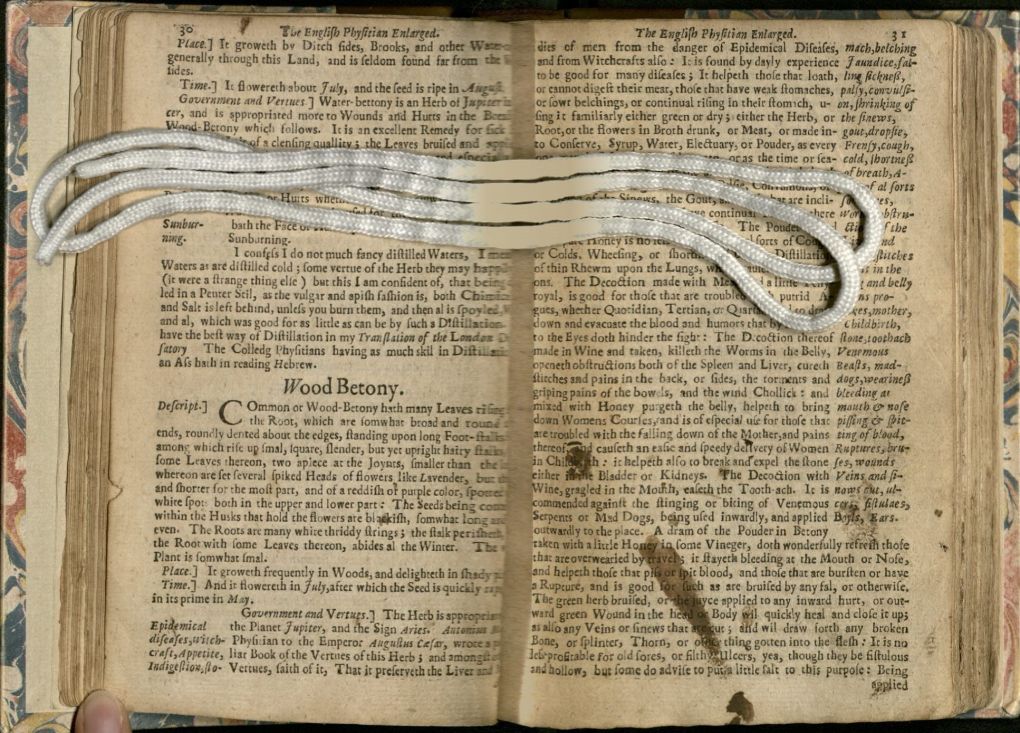Telling the Story of Wood Betony in a Book
Amy Bishop

The best booksellers are storytellers. They make the book leap off the catalog page and into the imagination, as authors, printers, or book owners are brought to life as vividly as any character in a novel. A well-crafted description, like a bird’s brightest breeding plumage, can take a book from “that’s an area we collect in” to “I’ve got to buy this book!!!”
Take, for example, my recent purchase of a 1656 copy of Nicholas Culpeper’s The English Physitian Enlarged. Culpeper, trained as an apothecary, was noted for his efforts to aid the poor, treating patients for free in his pharmacy near Spitalfields in London. He wrote this book as a resource for people to treat themselves, and—unlike other herbals from the time—included only those plants that grew in England, so that people would not expend valuable time and resources trying to find herbs that were not available.

The heading for the catalog description immediately points out a unique feature of the book, “With Wood Betony Pressed between its Pages.” Preserved botanical matter certainly adds interest to the book, but the shrewd cataloger at Pirages[2] pursued the trail of the leaves even further. Noting that the book’s entry for “Wood Betony” appears to be particularly well-used, the entry draws an intriguing connection between the medicinal uses of the plant and the year during which an early owner inscribed his name. I’ll let the catalog entry speak for itself:
One hopes the present copy was of use to former owner Richard Hill, who inscribed his name in it in 1666, the “annus horribilis” that saw both the Great Plague and the Great Fire of London. The two leaves pressed between two pages here appear to be wood betony, an herb protective against epidemical diseases; its entry in this text bears the marks of frequent consultation.

Thank you, Pirages, for this ready-made story to delight and horrify my audience when I show the book!

About this entry
Original post: Rare Books Highlights: Telling the story of wood betony in a book
Publication date: August 28, 2018
References
- Culpeper, Nicholas. The English Physitian Enlarged. London: printed by Peter Cole, at the sign of the printing press in Cornhil, neer the Royal Exchange, 1656.
- Credit: Wellcome Library, London. Wellcome Images images@wellcome.ac.uk http://wellcomeimages.org Nicolas Culpeper. Oil painting. Published: Copyrighted work available under Creative Commons Attribution only licence CC BY 4.0 http://creativecommons.org/licenses/by/4.0/ ↵
- Phillip J. Pirages Fine Books and Manuscripts ↵

